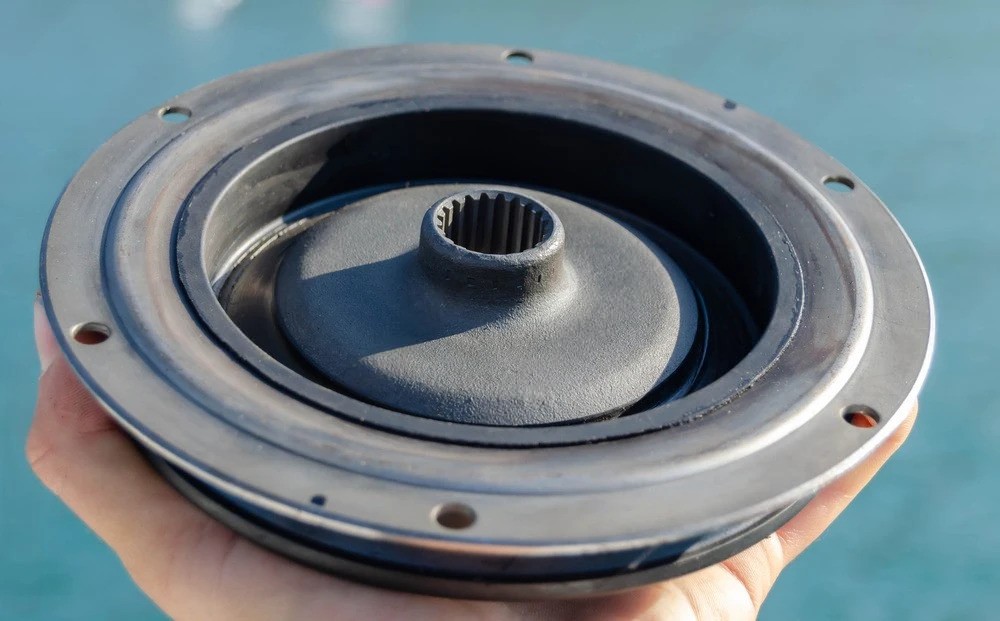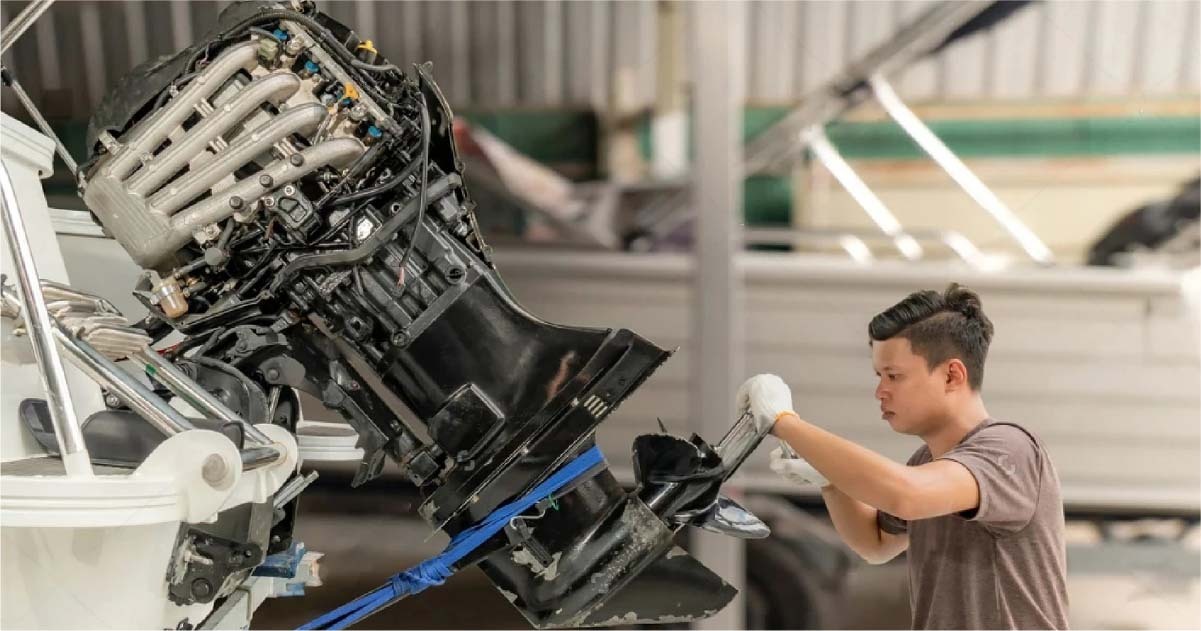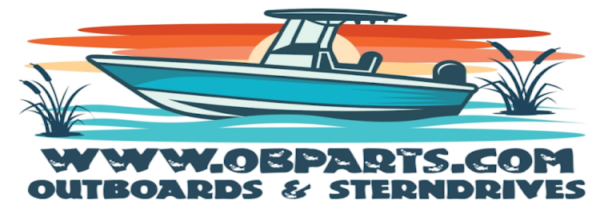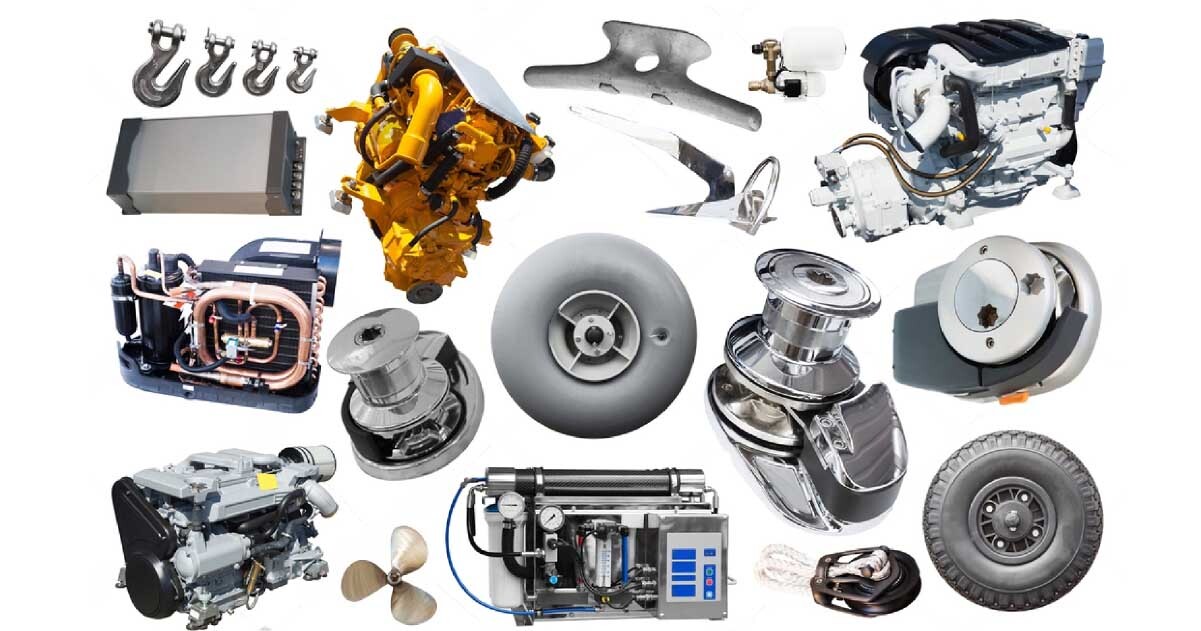7 Expert Tips for Finding Quality Used Marine Parts Online
Did you know that buying used marine parts can save you up to 50% compared to new ones without compromising quality or performance? Only if you know what to look for and where to look for.
If you own a boat, you better know how important it is to outfit your boat with the right parts regularly for smooth sailing, but finding quality used marine parts can sometimes feel like trying to find your way through unchartered waters.
In this blog post we'll share some practical and expert tips that will help you make confident choices and avoid common mistakes along the way.
With the right approach, you can save money, extend your boat's lifespan, contribute to sustainability by minimizing waste and supporting a circular economy. Let's get started!
Tip #1. Decide on the Exact Marine Part You Need
shutterstock/BearFotos
You can't make the right choice without knowing and understanding the exact part you need for your boat.
So, before starting your search, take the time to clearly identify the specific marine part you need. Knowing the exact make, model, and specifications of the part is important to ensure compatibility with your boat.
What exactly you can do is:
- Check your vessel's manual or consulting with a trusted marine technician if you are unsure about the details.
- Keep an eye out for part numbers or serial codes, as these can help narrow down your options when browsing listings or speaking with sellers.
Having this information ready will save you time, prevent from making costly mistakes, and make it easier to explain exactly what you are looking for.
Tip #2: Prioritize Reputable Online Marketplaces
Have decided on the part you exactly need? Now start looking for the reputable seller. How? This way.
Search for the reputable online platforms/sellers that often have established safeguards, detailed listings, and verified sellers to ensure you are getting what you pay for.
Places that specialize in marine equipment or have a strong track record for selling used parts, such as OBParts or other trusted niche platforms can be the trusted choice.
You can read seller reviews and ratings to get a sense of their reliability and how their ex-customers are recommending the particular place. Positive feedback and high ratings often indicate a trustworthy seller who provides accurate product descriptions and quality parts. If possible, choose sellers who offer clear return policies and warranties on used items, as this adds an extra layer of confidence to your purchase.
Also, don’t overlook product descriptions and photos. This can be vital trigger in your decision.
A reputable seller will provide detailed information about the part’s condition, including any wear, damage, or repairs. High-quality photos from multiple angles can help you spot potential issues and confirm compatibility with your boat.
Request Specific Used Sterndrive and I/O Engine Parts
Tip #3: Inspect Used Parts for Visible Wear and Tear

adobestock/Chocolatefather
Assessing the condition of a product is important, not just when shopping in-store, but also when buying used marine parts online. It's essential to evaluate the condition carefully to avoid any unpleasant surprises at the time of arrival.
First, thoroughly examine all the photos provided in the listing. Carefully look for high-resolution images taken from multiple angles, including close-ups of key areas like mounting points, connectors, and surfaces that may be prone to wear. If the seller hasn’t included enough pictures already, don’t hesitate to request more as it’s a reasonable ask when buying used parts.
Check if there are signs of damage such as rust, cracks, or excessive wear that might compromise the part’s performance.
For mechanical components, check for bent or misshapen areas, as they can indicate prior misuse or accidents. Electrical parts should show clean and intact wiring, free from frays or corrosion. If the listing includes a description, read it carefully for details about the part’s age, history, and any prior repairs.
Honest sellers often disclose minor issues upfront, and this transparency can help you decide if the part is still a good fit for your needs.
Usually the used parts don't come with warranty but many come. For added peace of mind, look for sellers who offer a short warranty or a return policy. This demonstrates confidence in the part’s condition and gives you a fallback if the item is not as described. When in doubt, reach out to the seller directly with specific questions to clarify concerns before check out.
Read More: How to Prevent Outboard Motor from Corrosion?
Tip #4: Verify Part Compatibility with Your Boat
One of the biggest risks when buying used marine parts online is ensuring the item will actually fit and work with your boat or not. So, it's very important to double-check that the part you are considering is fully compatible with your specific make, model, and year.
Many parts, even those designed for similar boats, can vary slightly in size, shape, or function.
You can refer to your boat’s owner manual or the manufacturer’s website, where you can find detailed specifications for the parts you need. If you are unsure about compatibility, contact the manufacturer or consult with a marine mechanic. They can help confirm in this area.
Some sellers will provide compatibility information in their product listings, but don't rely solely on their word. Look for part numbers or model identifiers that match exactly with what your boat requires. You can also cross-reference the part number on trusted websites or forums dedicated to boating to ensure you are making the right choice.
In some cases, reaching out to the seller for confirmation directly can work best.
A reputable seller will provide detailed answers and help you confirm compatibility. This step may take a little extra time, but it's far better to be sure than face the hassle and expense of returning an incompatible part later.
Tip #5: Check for Service History and Documentation

shutterstock/AMNATDPP
Ideally, the seller should provide service records or documentation that can confirm the part’s maintenance and any repairs it may have undergone. This information can give you insight into how well the part was cared for, how much use it’s had, and whether it’s been through any significant repairs or modifications before.
You can ask the seller if they have any records of the part’s service history.
For example the question like these:
- Was the part regularly maintained or used under optimal conditions?
- Has it been repaired or refurbished?
can help you in evaluating whether the part is still a solid investment or if it may require additional work to ensure it functions properly.
If documentation is not readily available, consider looking for signs that the part has been well-maintained. For example:
- Well-preserved parts often show little to no corrosion
- Mechanical components should move smoothly without resistance
In case the seller can't provide a clear service history or if the part appears to have been neglected, it may be worth reconsidering the purchase.
In the case of high-value or critical components, like engines or electrical systems, proper documentation becomes even more important. Without a clear history, you could be facing potential issues that may not be immediately visible but could impact your safety or the performance of your boat later on.
Note: Always ask maximum questions for your satisfaction and ensure the part meets your expectations before making a decision.
Related: How to Find out the Quality Used Outboard Engine?
Tip #6: Buy from Certified Marine Salvage Yards
One of the best options to buy marine parts online is from certified marine salvage yards. These yards specialize in the recycling and resale of high-quality marine components, often from decommissioned or salvaged boats. The benefit of purchasing from a certified salvage yard is that they adhere to industry standards for quality and safety, ensuring the parts have been properly inspected and are in working condition.
So, look for salvage yards that are certified by trusted marine organizations or those that have positive customer reviews.
These yards often stock a diverse selection of parts, including rare and hard-to-find components no longer available from original manufacturers. Plus, they typically offer competitive prices compared to brand-new parts, making them an excellent budget-friendly choice.
Mostly these yards test and refurbish parts before reselling them, giving you more assurance that you are getting a reliable product.
Tip #7: Avoid Too-Good-To-Be-True Deals
It's easy to get excited about a bargain when shopping for used marine parts online. But be careful of deals that seem too good to be true.
True that saving money is a big advantage when buying used parts but extremely low prices can sometimes signal hidden problems, such as subpar quality, misrepresentation, or even potential fraud.
If a part is priced significantly lower than others with similar specs and condition, take a step back and carefully evaluate the listing. Sellers offering parts at unusually low prices might not be transparent about the condition or history of the items, and what seems like a great deal could end up costing you more in repairs or replacements later.
Don't Make These Mistakes When Buying Used Marine Parts Online!
- Not all sellers have technical knowledge about the parts they are offering. So, don't just Rely on their descriptions alone as it can can lead to compatibility issues or buying an incorrect item.
- Large or fragile marine parts can be damaged in transit if not packed properly. Failing to confirm shipping practices or insurance options can result in unexpected surprises sometimes.
- Sometimes, urgency leads buyers to settle for the first available part without comparing prices or quality. Taking time to explore multiple options can save money and ensure better results.
- Statements like “lightly used” or “refurbished” can be subjective. Always ask for proof, such as service records or additional photos, to confirm the condition.
- Not checking seller reviews across multiple platforms could mean missing out on critical feedback about their reliability and service quality.
- Some parts, like seals or gaskets, have a limited lifespan even if unused. Buying older stock may mean the item is already approaching the end of its usability.
Explore top-quality used outboard engines here.
Is Buying Marine Boat Used Parts Online Worth it?
Absolutely, buying marine boat parts online can be a game changer—if you approach it the right way.
On the plus side, shopping online offers unmatched convenience, a wider selection, and often better prices than traditional marine stores. You can compare different suppliers, find rare or discontinued parts, and make purchases from the comfort of your home.
But, like anything, there are a few risks involved. One of the main downsides of online shopping is that you can’t physically inspect the parts before buying. This makes it essential to choose trusted sellers, ask all the right questions, and thoroughly review product descriptions and photos.
That’s why it’s so important to stick to reliable marketplaces and sellers who offer return policies or warranties.
These extra protections can give you peace of mind if the part doesn’t match your expectations or needs.
Overall, if you are careful and thorough in your research, buying marine boat parts online can be a smart, cost-effective way to keep your boat in top shape, especially if you are looking for hard-to-find components or looking to save on expensive in-store prices.
Need Help Finding the Perfect Part? Contact us for expert advice or browse our collection of top-quality used marine parts.
Posted by Brian Whiteside



